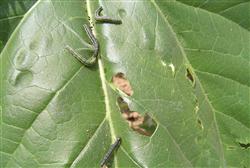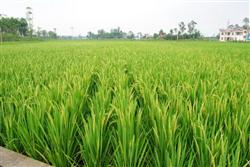How to control summer soybean meadow borer?

How to control summer soybean meadow borer? Please introduce that soybean meadow borer has risen from the sub-key insect of summer soybean in the past to the main key insect. The newly hatched larvae ate the mesophyll of the young leaves and the residual epidermis. After the 3rd instar, the food intake increased greatly, and the leaves were eaten into scars and only veins were left. The output was reduced by 10%, 15% in the last year and 20%, 30% in the serious year, which posed a serious threat to soybean production. Meadow borer can produce two generations of meadow borer every year, overwintering with mature larvae in silk soil cocoons. The overwintering larvae pupate and Eclosion from April to May. The first generation larvae are mainly harmful to rape. The second generation larvae damaged soybean from mid-August to early September. Adults are clustered and have a strong tendency to a variety of light sources, especially to black lights. Most of the eggs are laid on plants such as Liriaceae, Compositae and Solanaceae. The larvae ate more than 80% of the total food in the 4th and 5th instar period. Agricultural control during the spawning period of meadow borer, weeds in the field and on the edge of the ground are eliminated before hatching, and the shoveled grass is concentrated and buried. In the year of the occurrence of meadow borer, before the larvae enter the bean field, the insect control ditch can be dug and pesticides can be applied in the ditch. Chemical control 1. Fumigation: during the peak period of adult worms in August, 80% dichlorvos was used to mix sawdust and wheat chaff with 150 grams, 40 piles per mu, which was evenly piled under soybean trees, and the efficacy was usually maintained for 8mu for 10 days. 2. Spray: 10 days after the adult peak period, the larva hatches at its peak, and the larva is in a low instar stage, usually from late August to early September, with 25 ml of fenitrothion EC 25 ml per mu. 2. 5% enemy kill EC 20ml 30ml; 20% Quick kill butyl EC 20ml 30ml, diluted water 50kg evenly spray. 3. Powder spraying: 2. 5% trichlorfon powder; 3% mixed aldicarb powder; 2% borer pine powder, 1.5 kilograms per mu. Third, physical control sets up black lights in bean fields to trap and kill adults. Click to get more soybean planting technology click to get more grain and oil crop planting technology
- Prev

How to manage the heading and flowering stage of rice?
How to manage the heading and flowering stage of rice? Please introduce the method of rice heading stage in case of continuous low temperature, overcast and rain, should be widely used to control rice blast, susceptible varieties should be in the break stage (10% of rice break 50%) and full heading stage (80% panicle extraction of rice in the whole field), twice. The applicable potion is rice blast.
- Next

How to manage summer soybean in the middle and later stage?
How to manage summer soybean in the middle and later stage? Please introduce the flowering and podding period, when the growth of soybean enters a vigorous period, and the growth of nutrients gradually reaches its peak; it is the period when soybean needs the most fertilizer and water in its life, and sufficient fertilizer and water, strong light and enough carbon dioxide are conducive to promoting soybean flowering and fruiting. The soybean yield is high.
Related
- The first cup of black tea in spring, the flavor and history of tea gardens in Kenya, Africa
- The computer can not only choose potatoes, but also grow tea rice. AI will grow winter oolong tea champion.
- It is not only the inflated tea bitten by insects, but also engraved with the four seasons tea in Beipu.
- The Oriental Beauty Tea Festival in Zhuxian County takes the stage at the weekend to experience the plus-size feast of oil tea.
- & quot; Oriental Beauty Tea & Exploration of Emei in Hsinchu, the hometown of quot;
- The new variety of strawberry "Tainong 1" dessert is the first choice with mellow aroma. Crimson gorgeous
- History of Tea in Taiwan: from Wild Inner Mountain to Export Tea Garden
- Two types of Taiwan Oriental Beauty Black Tea won the British three-Star Award for Childhood Tea Xiang Zhang Jiaqi changed from pilot to champion tea maker.
- Banana species and varieties: the planting history of Taiwan Xianren banana and dwarf banana is long, is banana disease resistant?
- Coffee planting Technology: Qianjie Coffee from Seedling to harvesting

